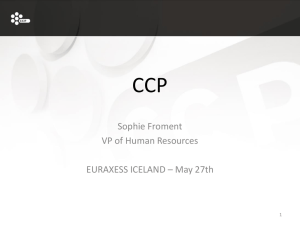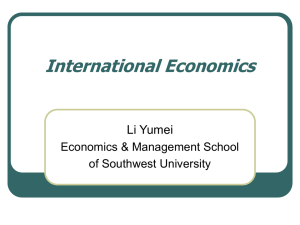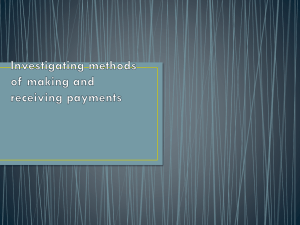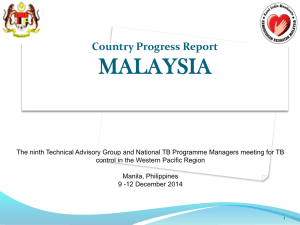PRACTICE QUESTIONS ON CH. 13 (NATIONAL INCOME
advertisement
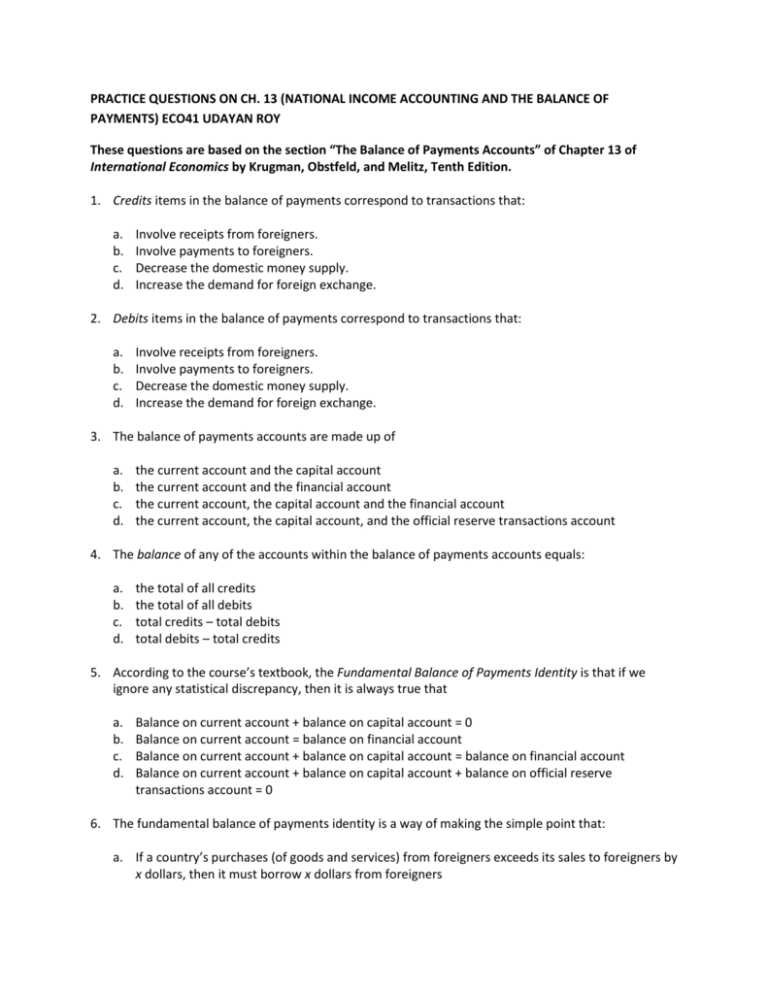
PRACTICE QUESTIONS ON CH. 13 (NATIONAL INCOME ACCOUNTING AND THE BALANCE OF PAYMENTS) ECO41 UDAYAN ROY These questions are based on the section “The Balance of Payments Accounts” of Chapter 13 of International Economics by Krugman, Obstfeld, and Melitz, Tenth Edition. 1. Credits items in the balance of payments correspond to transactions that: a. b. c. d. Involve receipts from foreigners. Involve payments to foreigners. Decrease the domestic money supply. Increase the demand for foreign exchange. 2. Debits items in the balance of payments correspond to transactions that: a. b. c. d. Involve receipts from foreigners. Involve payments to foreigners. Decrease the domestic money supply. Increase the demand for foreign exchange. 3. The balance of payments accounts are made up of a. b. c. d. the current account and the capital account the current account and the financial account the current account, the capital account and the financial account the current account, the capital account, and the official reserve transactions account 4. The balance of any of the accounts within the balance of payments accounts equals: a. b. c. d. the total of all credits the total of all debits total credits – total debits total debits – total credits 5. According to the course’s textbook, the Fundamental Balance of Payments Identity is that if we ignore any statistical discrepancy, then it is always true that a. b. c. d. Balance on current account + balance on capital account = 0 Balance on current account = balance on financial account Balance on current account + balance on capital account = balance on financial account Balance on current account + balance on capital account + balance on official reserve transactions account = 0 6. The fundamental balance of payments identity is a way of making the simple point that: a. If a country’s purchases (of goods and services) from foreigners exceeds its sales to foreigners by x dollars, then it must borrow x dollars from foreigners b. If a country buys goods and services from foreigners, it must sell domestic goods and services of equal value to foreigners c. If a country’s purchases (of goods and services) from foreigners exceeds its sales to foreigners by x dollars, then its central bank must print an additional x dollars d. If a country’s purchases (of goods and services) from foreigners exceeds its sales to foreigners by x dollars, then foreign central banks must lend money to Americans 7. A resident of Boston buys a Mercedes car for $80,000 from a local car dealer. The dealer exchanges $75,000, the wholesale price, into its equivalent in euro (the German currency) in the foreign exchange market and pays Mercedes. The German citizen who bought $75,000 in the foreign exchange market from the Boston car dealer buys U.S. stocks and bonds with the money. The two international transactions—the purchases of the car and of the stocks and bonds—are recorded in the U.S. Balance of Payments as: a. b. c. d. e. A $75,000 credit in the current account. A $75,000 debit in the current account. A $75,000 debit in the current account and a $75,000 credit in the financial account. A $75,000 credit in the current account and a $75,000 debit in the financial account. A $75,000 credit in the financial account. 8. A resident of Boston buys a Mercedes car for $80,000 from a local car dealer. The dealer sends Mercedes a check for the Euro-equivalent of $75,000, the wholesale price, from his account at a bank in Berlin. The two international transactions are recorded in the U.S. Balance of Payments as: a. b. c. d. e. A $75,000 credit in the current account. A $75,000 debit in the current account. A $75,000 debit in the current account and a $75,000 credit in the financial account. A $75,000 credit in the current account and a $75,000 debit in the financial account. A $75,000 credit in the financial account. 9. Which of the following is considered a credit in the financial account? a. b. c. d. A sale of U.S. financial assets to a foreign buyer. A loan from a U.S. bank to a foreign borrower. A purchase of foreign financial assets by a U.S. buyer. A U.S. citizen’s repayment of a loan from a foreign bank. 10. In a country’s balance of payments, which of the following transactions are debits? a. b. c. d. A decrease in the domestic bank balances of foreigners. A decrease in the foreign bank balances of domestic residents. Sale of assets by domestic residents to non-residents. Sale of goods by domestic residents to non-residents. 11. American residents’ incomes earned on overseas investments—in stocks, bonds, business ventures, real estate, etc.—show up in which account in the U.S. balance of payments? a. Current account. 2 b. Capital account. c. Unilateral transfers account. d. Financial account. 12. When central banks buy or sell official international reserves, they are said to be engaged in a. b. c. d. Monetarist intervention. Interest rate targeting. Inflation targeting. Official foreign exchange intervention. 13. Every international transaction automatically enters the balance of payments a. b. c. d. e. once either as a credit or as a debit. twice, once as a credit and once as a debit. once as a credit. twice, both times as debit. the times, once as a credit, once as a debit, and once as an exchange. 14. The official settlements balance (sometimes informally—and confusingly—called the balance of payments) is the sum of a. the current account balance, the capital account balance, the non-reserve portion of the financial account balance, the statistical discrepancy. b. the current account balance and the capital account balance. c. the current account balance, the capital account balance, the non-reserve portion of the financial account balance. d. the current account balance and the non-reserve portion of the financial account balance. e. the current account balance and the interest in all investments. 15. If China’s central bank buys US government bonds it is recorded in China’s Balance of Payments as a: a. b. c. d. credit in the current account. debit in the current account. credit in the financial account. debit in the financial account. 16. Suppose Bank of Japan, which is Japan’s central bank, bought US government bonds worth $300 billion in 2011. Which of the following is true? a. Japan’s central bank printed the necessary amount of yen, the Japanese currency, and used the money to buy US dollars in international currency markets. Those US dollars were then used to buy US government bonds. b. The purchase of US government bonds by the Bank of Japan implies an increase in Japan’s foreign currency reserves. If at some point US dollars become necessary, the US government bonds could be sold to obtain US dollars. c. Japan’s central bank printed the necessary amount of yen and used the money to buy US dollars. Therefore, the purchase of US government bonds by the Bank of Japan implies an 3 increase in Japan’s money supply (which is roughly the yen held by the Japanese public as currency and in their checking accounts). d. The Bank of Japan is lending money to Americans and enabling them to import more than they export e. All of the above 17. If we ignore the capital account, the net foreign wealth of the United States can decrease if a. b. c. d. e. The US has a deficit in its current account The US has a surplus in its financial account Asset prices rise in the US and fall in other countries The US dollar increases in value (relative to other currencies) All of the above 18. The difference between a country’s purchases and sales of foreign assets is called a. b. c. d. e. its financial account balance its current account balance its net financial flows its international investment position both (a) and (c) are correct 19. In 2009, the net financial flows of the United States were equal to −$216.0 billion. This means that in 2009 a. New lending by American residents to foreign residents exceeded new borrowing by American residents to foreign residents by $216.0 billion b. New borrowing by American residents from foreign residents exceeded new lending by American residents to foreign residents by $216.0 billion c. America’s exports of goods and services exceeded America’s imports of goods and services by $216.0 billion d. The increase in the value of US assets owned by foreign residents exceeded the increase in the value of foreign assets owned by American residents by $216.0 billion 20. In 2009, the USA’s official settlements balance was −$397.7 billion. This means that a. The increase in lending by the American central bank (The “Fed”) to foreigners exceeded the increase in lending by foreign central banks to Americans by $397.7 billion. b. The increase in lending by the Fed to foreigners was exceeded by the increase in lending by foreign central banks to Americans by $397.7 billion. c. The world’s central banks used their collective lending power to enable foreigners to buy more goods and services from Americans than they sold to Americans. d. The sum of the balances on the current and capital accounts was -$397.7 billion. e. The sum of the balances on the current and capital accounts was $397.7 billion. 4

